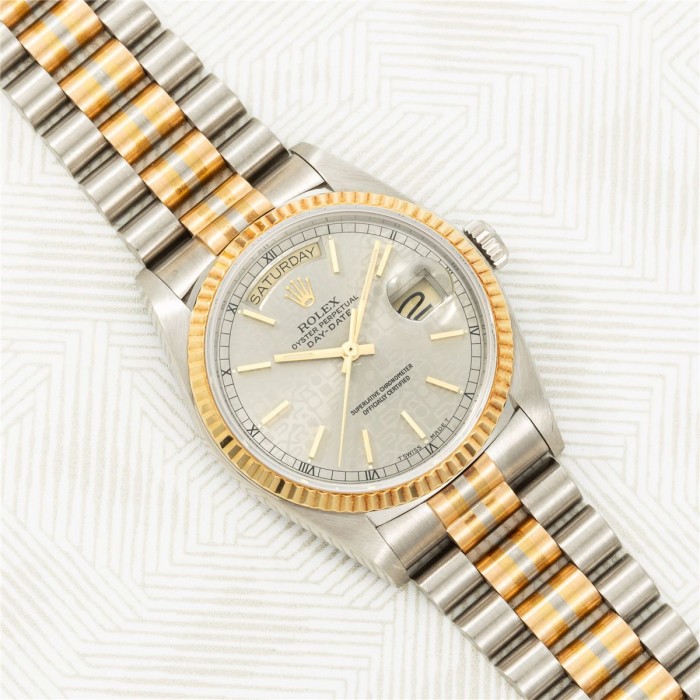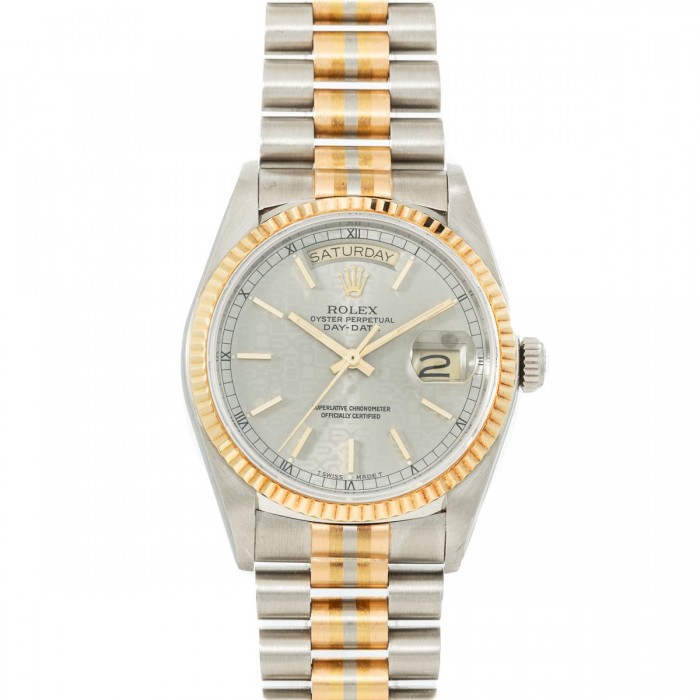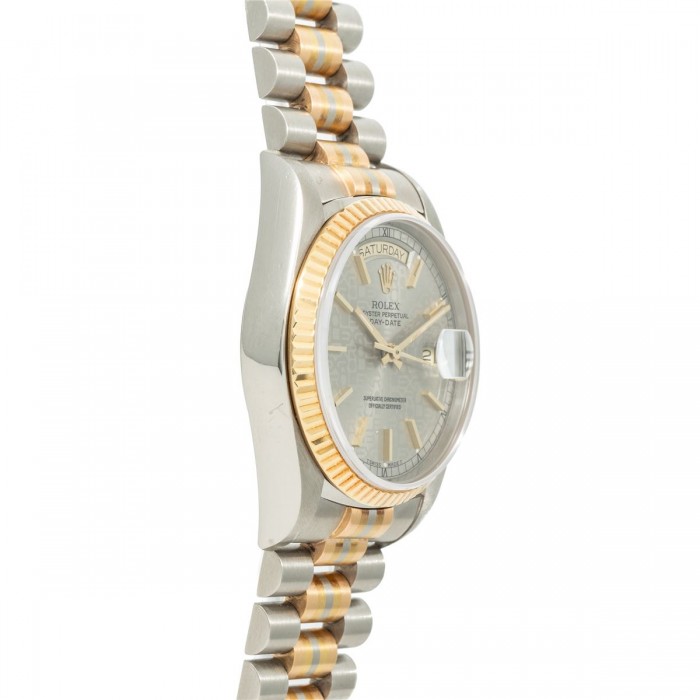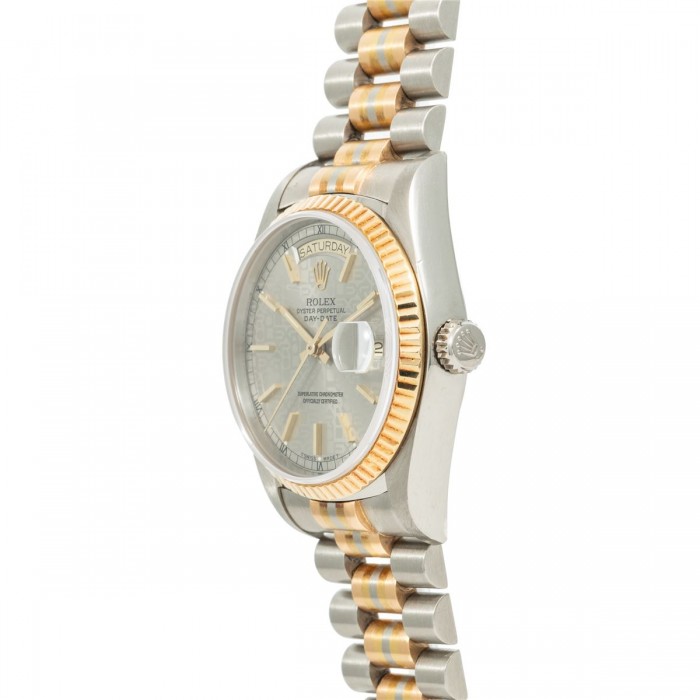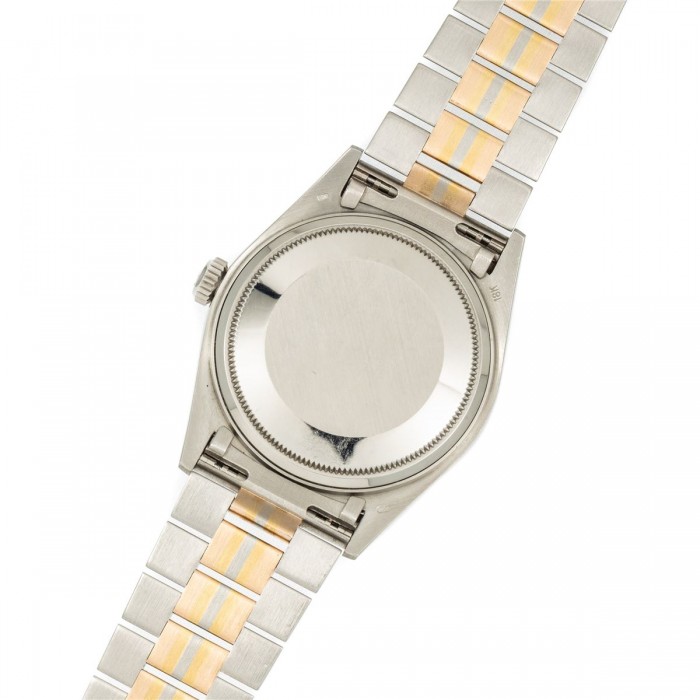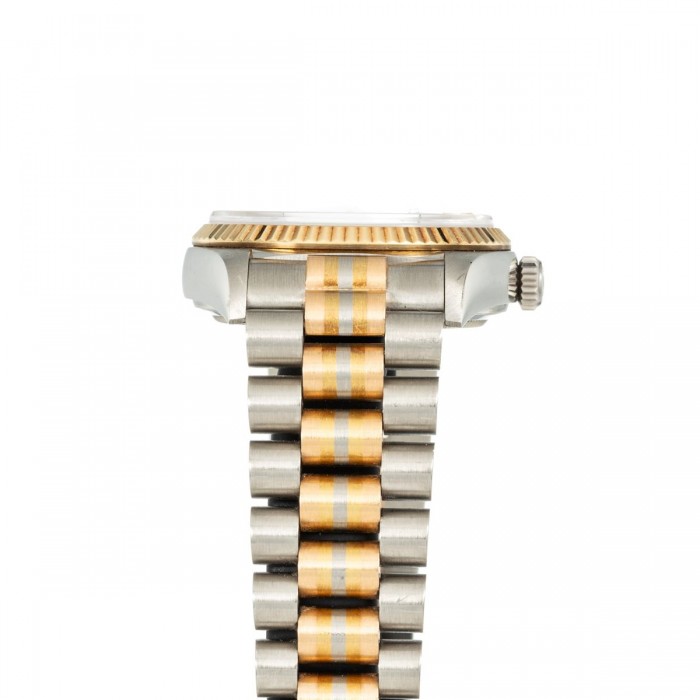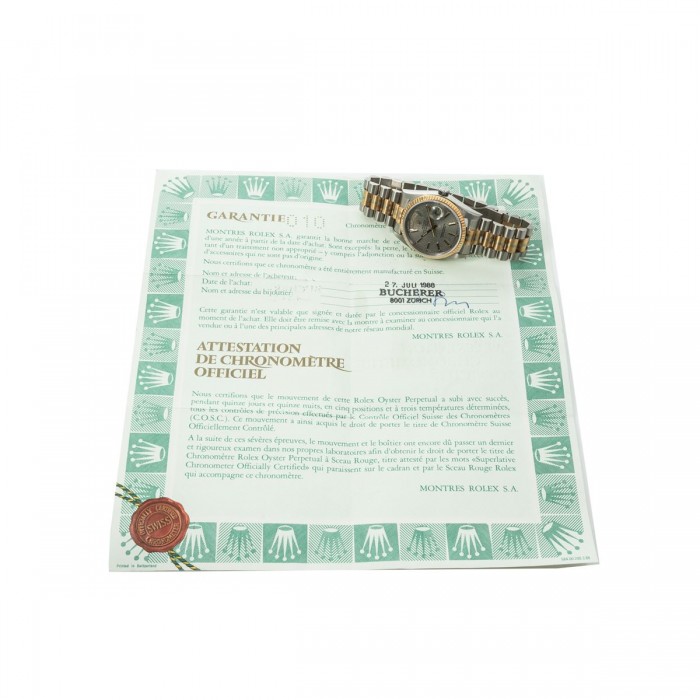Why We Love It
Quickset Day-Dates were once a thing of fantasy.
Early Day-Date models offered no Quickset functionality, meaning that both the Day and Date functions had to be manually set - with a fair amount of winding, mind you - by the user in order to display the correct information on the calendar complications. by the late 1970s, Rolex had improved the system and began offering Single-Quickset versions in the 'five digit' References based on the 18038.
This particular watch, a Reference 18039, dates to circa 1987 and is not 'just another' solid gold Day-Date... Finished in Rolex's 'Tridor' blend of yellow, rose, and white gold, this particular Day-Date offers some additional flair for those looking or something a little bit out there.
Furthermore, this piece features a very different Jubilee 'computer' Tritium dial with a matching handset, an 18k fluted bezel, and is accompanied by its punched papers from circa 1988.
An 'elevated' Rolex for when the standard fare of solid gold won't cut it.
The Day-Date Story
When you’ve got a good thing going, sometimes you just know.
Such is the case with the Rolex Day-Date. At the time of the Day-Date’s release in 1956, it was Rolex’s most complicated wristwatch: all previous attempts had failed to resonate with consumers.
But as soon as Rolex secured the patent in July of 1955, production of the Day-Date was rushed for a debut at the Basel Fair the following spring.
Although early Day-Dates were plagued by technical problems resulting from the complexity of the automatic movement with dual calendar function, those were soon resolved. After President Eisenhower sported one (a gift from the manufacture), its success was secured. The watch came to be known as the “President,” (due to the fact that several U.S. presidents since Eisenhower have worn one), and it certainly lives up to its dignified nickname.
For a brand that has built its reputation on its sports watches, it's perhaps unsurprising that the Rolex Day-Date is amongst the brand's best-sellers. True, the brand has always produced dress watches, but while the brand's more overt dress watch, the Cellini, often seems out of place among the brand's Oyster-cased offerings, the Day-Date is sturdy, solid, and at home alongside the Submariners and GMTs that make up the Oyster Perpetual collection.
Rolex has approached continual development of model as they do every other, making quiet improvements over the following decades, ensuring the Day-Date is worthy as the centerpiece of Rolex's Oyster line as horological technology evolves.
Whether a simple 36mm yellow gold piece or a Day-Date II 41mm Day-Date in platinum with a gem set dial, the Day-Date is internationally recognized as time timepiece of success and leadership, and of great taste.

No questions about this product, be the first and ask your question.



